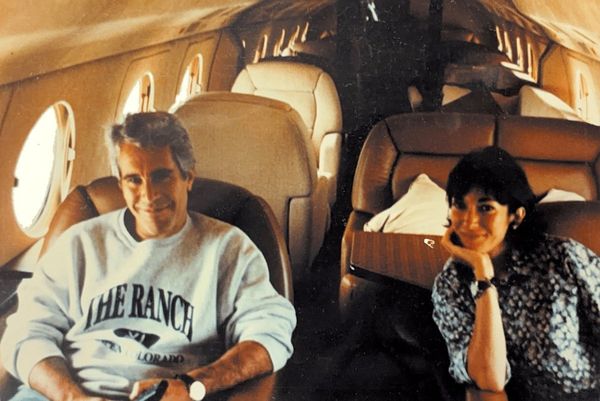
With the inauguration just a few days away, the incoming administration will soon have to transition from campaign rhetoric to the substance of economic policymaking. Casting the economy as a "disaster" was electorally effective, yet no freshly elected president has entered office with a stronger economic backdrop in recent history.
President-elect Donald Trump has ambition to reshape the economy and a strong mandate to roll out new policies. Yet, Winston Churchill’s apocryphal adage that politicians should “never let a good crisis go to waste” would be a risky proposition once we recognize that the “disaster” is in fact a substantial macroeconomic inheritance. Growing, spending, or squandering that endowment are therefore all on the table.
Sizing up Trump’s macroeconomic inheritance
How does Trump’s macroeconomic inheritance stack against his predecessors’, looking as far back as the recently deceased Jimmy Carter?
The labor market and specifically the unemployment rate are the cornerstone of a healthy economy. Trump wins: At 4.1%, he starts from a better slate than any other recent incoming president. Neither is it the case that government hiring underwrites the strong labor market, a popular narrative. In 2024, private sector job creation was healthy, with government accounting for only 20% of all hiring.
But that’s not all. At 2.4%, real GDP growth is very respectable. Not the best, but faster than what Joe Biden began with or Trump inherited in 2017. Faster than either of the starts for Barack Obama, as well as Ronald Reagan’s first term. In fact, 2.4% is better than it seems because fast growth is not merely because the economy is bouncing back from recession but is now operating above many estimates of its potential.
Yes, there is the matter of inflation, which cost Biden and Kamala Harris politically. From its peak of 9.1%, CPI inflation has cooled to just 2.7%. That’s somewhat above the 2% the Fed would like and higher than what presidents started with in the 2010s—when inflation was stubbornly too low. It is nowhere near the runaway problem that Carter and Reagan faced and what inflation looked like in the middle of Biden’s term.
The deficit is perhaps the ugliest part of this inheritance, particularly so given the strength of the economy. It has only been larger when the economy was in deep crisis (COVID) as Biden entered the White House or still recovering from one after Obama’s reelection (the global financial crisis). Yet, today debt and deficit are not binding political or economic constraints on the incoming administration and have not been the focus of Trump’s ire.
Any other president would have envied Trump’s economic inheritance. Unlike Biden or Obama, Trump isn’t picking up an economy in crisis. He isn’t starting in the shadow of recession as Clinton or Reagan did, and he doesn’t seem likely to walk into one immediately like George W. Bush.
If you break it, you buy it
So, what is he likely to do with this enviable starting position? All incoming administrations have ambitious plans for bold policy makeovers, and Trump has a strong popular mandate to roll out his campaign promises.
It’s also true that the best opportunities for big change come when crisis demands extraordinary response. In times of crisis, there is little (further) downside, much upside, and an urgency to act—the proverbial crisis that must not be “wasted.”
But therein lies the risk for Trump. If the narrative of a “disaster” lives on, the risk of policy overreach rises sharply as he tries to cure an economy that is humming along, churning out jobs, and driving consumption growth. Remodel the economy if you must, but remember, if you break it, you buy it. After Jan. 20, it will be President Trump who will need to deliver even lower unemployment, even faster growth, and lower prices.
Growing or spending the inheritance?
Nothing rules out that Trump can be a good steward of his macroeconomic inheritance, maintain a strong economy, and even grow it. The fundamentals are in place. Strong household balance sheets and continued real income growth provides a healthy backdrop. Labor costs pressure firms to invest and search for productivity gains and that is how the U.S. economy can reap the benefits of an “era of tightness.” Against this backdrop, a recession in the short run is unlikely.
Even so, Trump’s policy proposals—which remain vague—run the risk of spending the endowment he starts with. Sharp changes in policy will, at a minimum, inject uncertainty and add frictions that could chip away at the macro inheritance. Consider the three key planks in Trump’s economic policy agenda:
Tariffs would not lower the price level, as he’s promised, but rather add inflationary pressures and weaken consumer spending. That said, the impact would be a one-off shift in prices and consumption. If no further tariff hikes follow, they are unlikely to drive sustained price changes.
Deportations could lower labor supply and fuel wage growth, which is already strong. Strong action on deportations may be a popular mandate, but it does conflict with the goals of inflation management, as well as longer-run labor supply.
Tax cuts would largely be an extension on what was already in place (the Tax Cuts and Jobs Act of 2017), thus not providing a new tailwind. It would also mean large deficits when the economy is strong and rates are high, potentially adding upside volatility in rates that could diminish the macroeconomic inheritance.
While a recession in 2025 is unlikely, even with the added economic policy uncertainties, it is difficult to see how the second Trump administration will deliver on the promises of an even lower unemployment rate, lower prices, and lower deficits.
Squandering the inheritance?
Besides growing and spending an inheritance, one can also squander it. In macroeconomic terms, that amounts to big structural breaks that the economy struggles to recover from and leave indelible marks—think the global financial crisis.
There are three structural risks to consider: unmooring inflation expectations, crises of bank capital, and the creditworthiness of the government.
While none are likely, and nearly impossible in 2025 given the time they would take, the most plausible scenario is a curtailing of the Federal Reserve’s independence. Trouble brews when politicians lean on monetary policymakers to deliver easy policy in the face of price pressures. Over time, inflation expectations would crack, crumble, and collapse, an unmooring that would usher in stagflation.
The bar is high
Deep crises give new political leaders an opportunity to build back and deliver fast growth easily. But if they start from a position of strength, the bar for outperformance will be high. The incoming administration will have to navigate an already booming labor market and economy operating above its potential. It will be difficult to accelerate further without reaccelerating price growth and monetary pushback. Bold policy proposals may need to give way to more experimental ones, and the campaign narrative of an economic "disaster" could soon be replaced by rhetoric about a strong economy.
Read more:
- Trump’s impact on M&A: Part chaos, part back-to-business, all action
- The ‘Trump bump’ has survived tariff announcements—but will it survive the good, the bad, and the unknown in his cabinet?
- Trump’s plans to kill EV subsidies signal a new era of climate tech Darwinism
- I’m a Canadian listening to Trump. Let’s talk about ‘the 51st state’
The opinions expressed in Fortune.com commentary pieces are solely the views of their authors and do not necessarily reflect the opinions and beliefs of Fortune.







